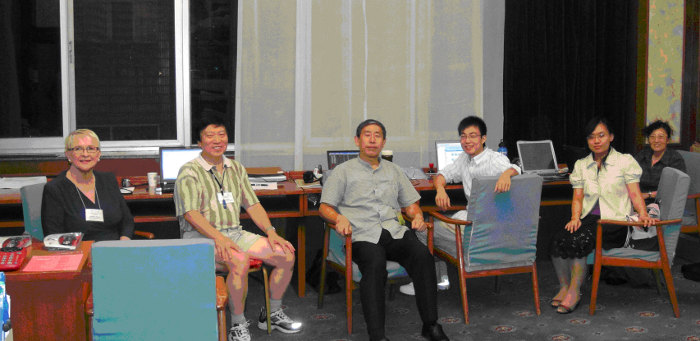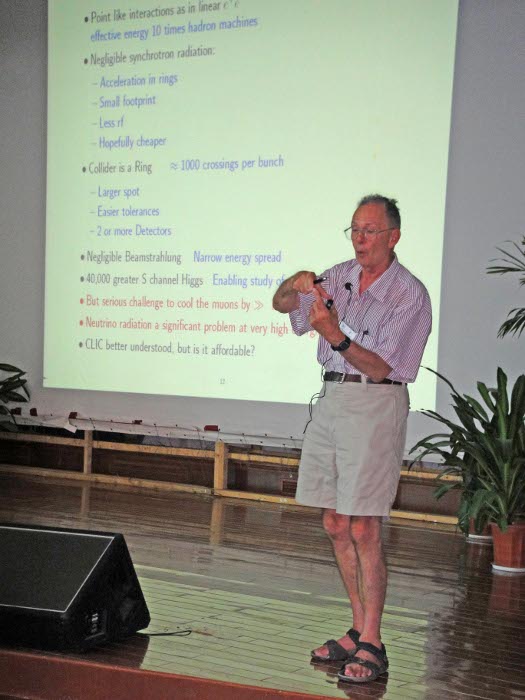Director's Corner
17 September 2009
 Barry Barish |
Linear Collider Accelerator School underway in China
I write this week’s column as a lecturer at the fourth International Linear Collider accelerator science school that is underway at the Hotel Jixian in Huairou, located in a beautiful isolated park-like area about one hour from Beijing, China. This is a perfect place for an intensive school and seventy students are busy hearing a very good set of lectures, doing homework every night and making new friends. My lectures consisted of a full-day introduction to terascale physics, the ILC accelerator and detectors.
 The beautiful venue for this year’s Linear Collider Accelerator School The beautiful venue for this year’s Linear Collider Accelerator School |
 The lecture hall The lecture hall |
 Evening homework and tutorial session Evening homework and tutorial session |
 The organisers and staff support The organisers and staff support |
The focus of the school is on tera electron volt-scale linear colliders, including the International Linear Collider (ILC), the Compact Linear Collider study (CLIC) and the muon collider. Over the past two years we expanded the focus of the school beyond just the ILC, making a wider programme. Of course, these three potential future projects have largely overlapping physics goals, making them competitive with each other for the next large particle physics facility. Despite the competitive aspects, the accelerator physics issues for the three initiatives have both overlaps and some different accelerator physics issues. For students of accelerator physics, the breadth of interesting accelerator R&D driven by common physics goals makes for a rich and challenging curriculum.
The main difference between this year's school and the previous schools is a more in-depth curriculum, encouraging participation by more advanced students including returning students from our previous linear collider schools. The school this year began with two days of common lectures, an introductory lecture and an introduction to the ILC by me, a lecture on CLIC by Frank Tecker (CERN) and a lecture by Bob Palmer (BNL) on muon colliders. These introductory lectures were followed by a general introduction to the school's two parallel tracks by Dan Schulte: 1) accelerator physics for sources, damping rings, linacs and beam delivery system and 2) superconducting and warm radiofrequency (RF) technology, low-level and high-power RF.
The linear collider school is a clear success with a high demand and a very competitive process for choosing students. There is a worldwide need for high quality academic teaching of accelerator physics to help develop young accelerator scientists by teaching them about the forefront problems in developing TeV lepton colliders. This provides for very attractive subject matter and many of the most active and knowledgeable accelerator scientists who are involved in TeV lepton colliders make the effort to participate as lecturers.
Lastly, the hard work and organisation of the school has been very enthusiastically and capably carried out by Alex Chao (SLAC) and Weiren Chou (Fermilab). They worked with an international curriculum committee in developing the curricula and selecting and recruiting the lecturers. They made sure the facilities for the school were conducive to hard work and learning, and above all, they encouraged a strong work ethic through homeworks, interactions with lecturers and a rigorous and competitive final examination at the school.
I want to personally thank everyone involved in organising, supporting or lecturing at the school. They did a superb job and I assure them that the Global Design Effort looks forward to sponsoring the school again next year when it will be hosted by CERN, and hopefully I will again be able to participate as a lecturer.
-- Barry Barish
